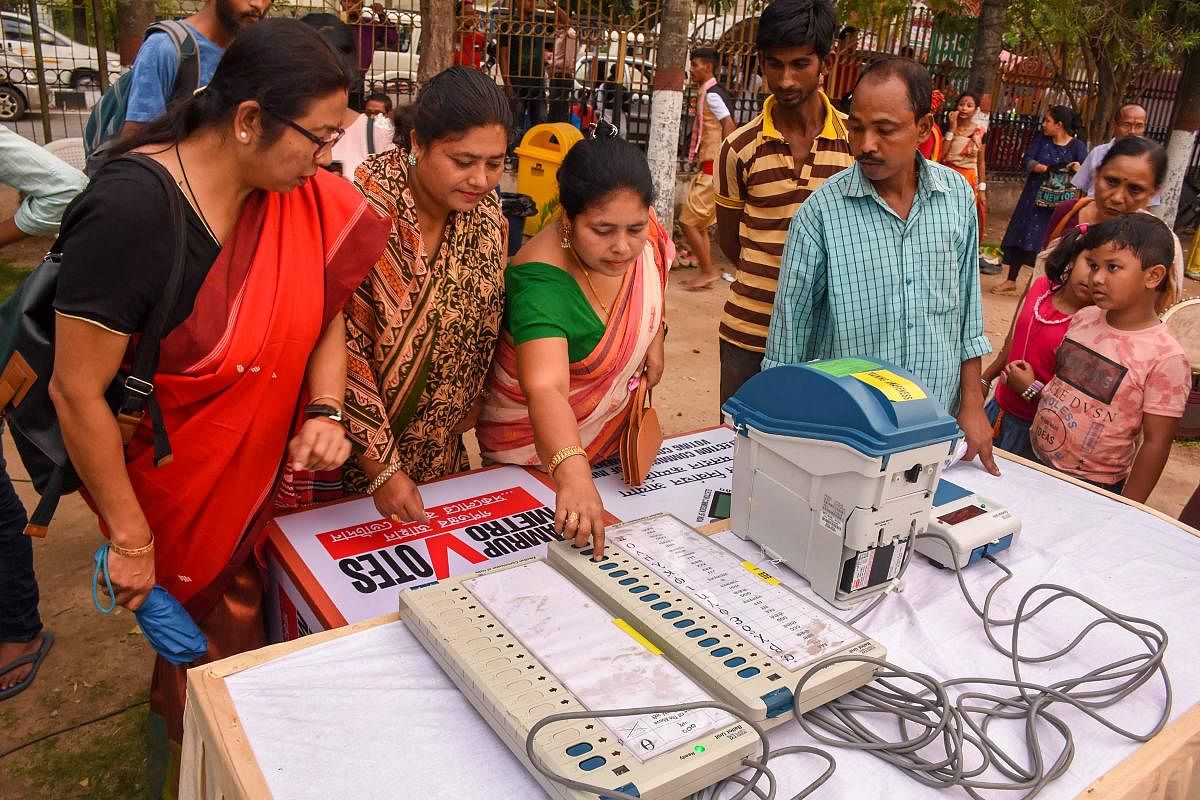
Political parties frequently question the veracity of the Electronic Voting Machine (EVM) and argue that the machine can be manipulated. The victory of the BJP with a brutal majority at the Centre and a couple of states ignited speculations again recently. Some hackers also backed these arguments.
The Supreme Court actually banned the EVM in elections following the first experiment without Parliamentary approval in the 1982 Kerala Assembly polls. The Election Commission (EC) selected 50 out of 84 booths of Paravur constituency in Kerala's Ernakulam district to test EVMs for the first time in the country. The poll panel had a herculean task to convince political parties and teach the electorate about how EVMs would work.
The CPI fielded Sivan Pillai to beat former Assembly speaker A C Jose of the Congress in the elections. As a speaker, Jose was known for using the casting vote a historic number of times - seven times - to help the K Karunakaran-led Congress government.
Both the Left Front and the Cong-led UDF were somehow convinced and went door to door to persuade voters about using EVMs at polling booths.
The voting at EVM booths ended faster than at other booths on May 19, 1982. The counting was also completed sooner. However, the poll result made the Congress party question the technology. Pillai with 30,450 votes defeated Jose (30,327) by a margin of 123 votes.
Jose then moved the High Court challenging the use of EVMs under the Representation of the People Act, 1951, and the Conduct of Elections Rules, 1961. He argued that these legislations did not allow the use of EVMs in elections. To his dismay, the High Court dismissed his petition.
Jose appealed in the Supreme Court and earned a favourable order. The Supreme Court asked the EC to conduct a repoll with a ballot paper at 50 booths where EVMs were used. The apex court also barred the EC from experimenting with "innovative methods" in elections.
After the repoll in 1984, Jose won by a margin of 2,000 votes. Paravur thus made election history in India by being the first constituency to experiment with EVMs.
Following the 1984 Supreme Court order, the EC halted the use of EVMs. In 1992, the Parliament amended both the Representation of the People Act and the Conduct of Elections Rules to legitimise the use of EVMs in elections. Since 1998, EVMs are used for both the Lok Sabha and state Assembly elections. Now the EC has introduced the Voter Verified Paper Audit Trail (VVPAT) to have more transparency in the elections.